Myxomatosis in Rabbits
Myxomatosis, sometimes referred to as myxi, is a serious viral disease that presents with severe symptoms in pet rabbits such as fever, lethargy, and inflamed eyes. Unlike bacterial infections that can be successfully treated with antibiotics, myxomatosis is not easily cured and is often rapidly fatal. There are no specific treatments, and supportive care is only occasionally successful in helping rabbits recover. However, preventative measures such as vaccination, flea repellents, and keeping your rabbit away from potentially infected rabbits can help avoid myxomatosis.
What Is Myxomatosis?
Myxomatosis is caused by the myxoma virus, a kind of pox virus that only affects rabbits. There are also different strains of this virus that vary in their virulence. Both wild and domesticated rabbits can get myxomatosis. Wild rabbits can survive as carriers, but the disease is usually fatal in domestic breeds (particularly those of European descent). The onset of illness is rapid after transmission, and rabbits typically die within two days of showing symptoms.
Symptoms of Myxomatosis in Rabbits
Rabbits that contract myxomatosis may suddenly become very ill. If a rabbit is showing symptoms, it is not uncommon for the animal to die within 48 hours.
Within hours or days of contracting the myxoma virus, rabbits will show signs of feeling unwell, such as food refusal or lethargy, and their eyes will become inflamed. If a rabbit does not die within two days, as is usually the case, the illness may begin to affect the mucous membranes and other tissues, including the eyes, nose, mouth, genital and anal areas, and ears (which become droopy if they are usually standing). The rabbit's entire face may also become very swollen, and thick pus may be discharged from the nose. Due to the swelling and discharge, the rabbit will start to have difficulty breathing. Most rabbits die within 14 days of the onset of these symptoms.
In more chronic cases (depending on the virus strain and immunity of the rabbit), lumps and nodules (myxomas) may develop on the body. Rabbits with this lumpy form of myxomatosis may survive and become immune to the myxomatosis virus. This is commonly seen in wild cottontail rabbits but unfortunately seems to be a less likely course of the disease in domestic rabbits. Instead, most pet rabbits that are diagnosed with myxomatosis end up suffering from the acute forms of the disease and eventually die.
Causes of Myxomatosis
This pox virus is spread by blood-sucking insects but can rarely be transmitted through contact with an infected rabbit. Carriers of the virus include:
- The rabbit flea
- Mosquitoes, mites, lice, and flies
- Infected rabbits (less common)
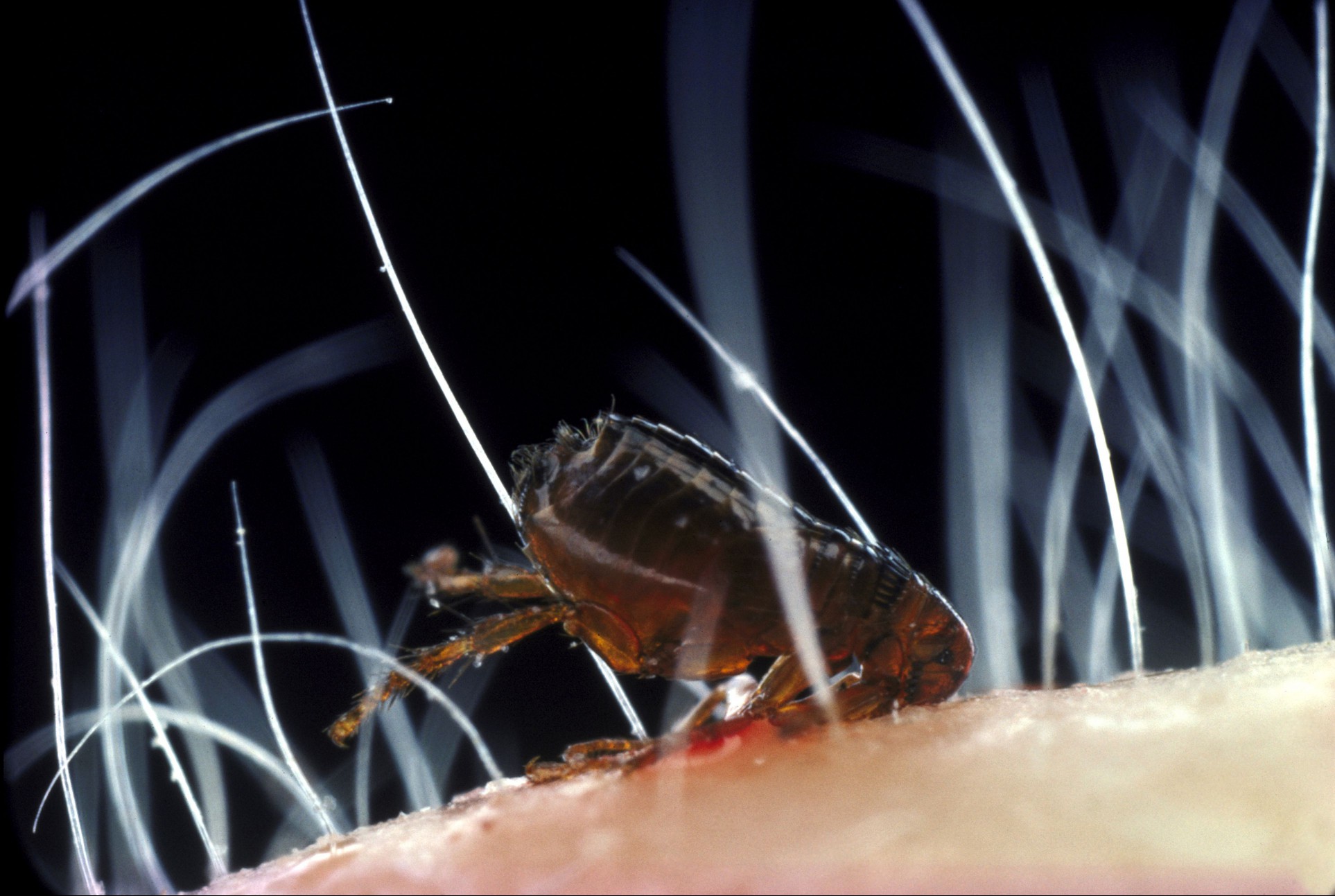
Diagnosing Myxomatosis in Rabbits
Diagnosing myxomatosis in a live rabbit is based on a veterinarian's recognition of the classic symptoms, blood and urine tests to detect the virus, and biopsies of myxomas. But, since the disease is so rapidly fatal in most cases, a diagnosis is more frequently made by a postmortem examination.
Treatment
There is, unfortunately, no specific treatment for myxomatosis so only supportive care (fluids, antibiotics to prevent secondary infections, and pain medication) can be offered by your vet. Because domestic rabbits tend to be very susceptible to the virus and suffer greatly with symptoms of the disease, euthanasia is often recommended. In some cases, however, palliative care can allow a previously young, healthy rabbit to recover.
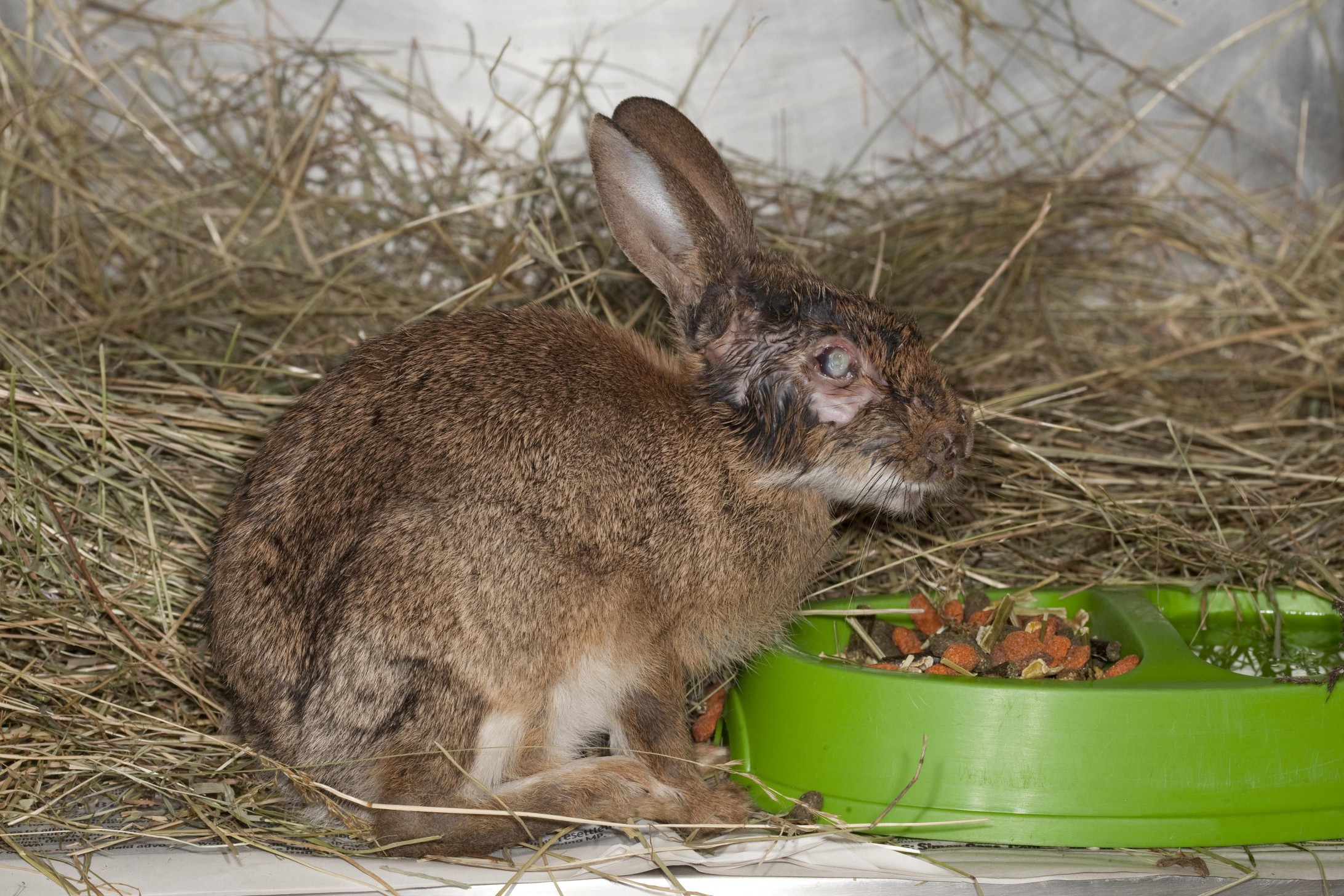
Prognosis for a Rabbit With Myxomatosis
Unfortunately, the prognosis for a rabbit with myxomatosis is grim. Few domestic rabbits survive this disease.
How to Prevent Myxomatosis
To help prevent myxomatosis, make sure your rabbit is not exposed to sources of the disease by taking the following precautions:
- Avoid mosquitoes: Stay away from mosquito-infested areas and, if possible, keep your rabbit indoors.
- Use a flea preventative: A monthly prescription flea preventative for pet rabbits may be a good idea even if your rabbit never goes outside.
- Don't let your rabbits socialize with other rabbits: Avoid fairs, shows, or other events where unfamiliar rabbits are brought together.
- Quarantine sick rabbits and exposed rabbits: Take steps to prevent direct transmission via your clothes, food, and other supplies. Quarantine any rabbits that have been exposed to a sick rabbit for 14 days and monitor them for symptoms of myxomatosis.
- Vaccinate your rabbit: If you live in the United Kingdom, you can vaccinate your rabbit for myxomatosis. It may not entirely eradicate the disease, but it does reduce the severity of the disease; vaccinated rabbits can and do recover. The vaccine can be given to rabbits once they are 6 weeks old. Repeat yearly or every six months where myxomatosis is common. This vaccine has been available as a combination vaccine with the rabbit hemorrhagic disease vaccine since 2012.
The myxomatosis vaccine is not available in the United States or Australia; one reason for this a concern that the virus in the vaccine might spread to the wild rabbit population. If this occurred, the wild rabbit population could develop an immunity to myxomatosis, leading to an explosion in the rabbit population. Myxomatosis was at one point deliberately introduced into the rabbit population in Australia to reduce the rabbit numbers; the outcome was an increased immunity to the disease and, in the long run, an increase in the rabbit population.
Is Myxomatosis Contagious to Other Animals?
Myxomatosis is contagious among rabbits, so it is important to isolate a sick rabbit from others as soon as symptoms appear. It is unusual, but possible, for the virus to spread by direct contact between rabbits as well as indirect contact (via items such as food dishes or clothes that carry the virus from rabbit to rabbit) or air transmission.
RECOMMENDED NEWS

What Do Hermit Crabs Eat?
Before getting a pet hermit crab, you might ask yourself, “What do hermit crabs eat?” Thankfull...
Read More →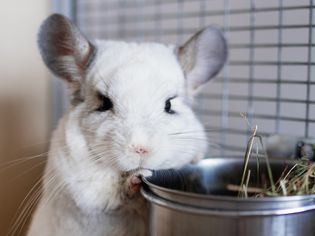
Chinchilla Care Guide
Chinchillas can make wonderful pets for the right person, but before deciding on a pet chinchilla, ...
Read More →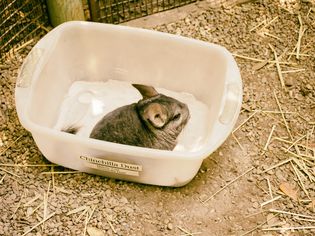
Chinchilla Dust Baths
A dust bath is a common self-grooming activity for chinchillas and other small pets like birds and ...
Read More →
Pet Hamster Toys
Hamsters, both dwarf and Syrian, are active creatures. They need a variety of toys and other items ...
Read More →
Can Domesticated Rabbits Survive in the Wild?
Sometimes well-meaning pet rabbit owners will announce that they have "set a rabbit free ...
Read More →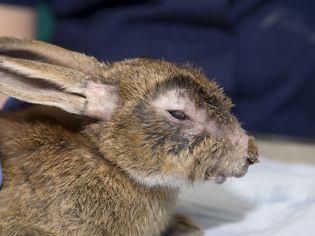
Myxomatosis in Rabbits
Myxomatosis, sometimes referred to as myxi, is a serious viral disease that presents with severe sy...
Read More →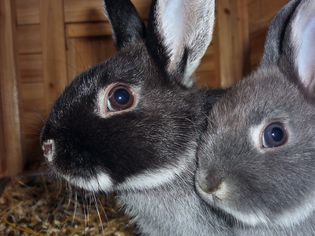
How to Care for a Pet Silver Fox Rabbit
Only the third rabbit breed to have been developed in the United States, the silver fox rabbit is a...
Read More →
BML Diet for Sugar Gliders
Project Overview Working Time: 20 mins Total Time: 3 hrs, 20 mins Yield: 20 ser...
Read More →
Preventing Incomplete Shedding Problems in Reptiles
There are many problems that can contribute to shedding problems or incomplete sheds, but the most ...
Read More →
Comments on "Myxomatosis in Rabbits" :